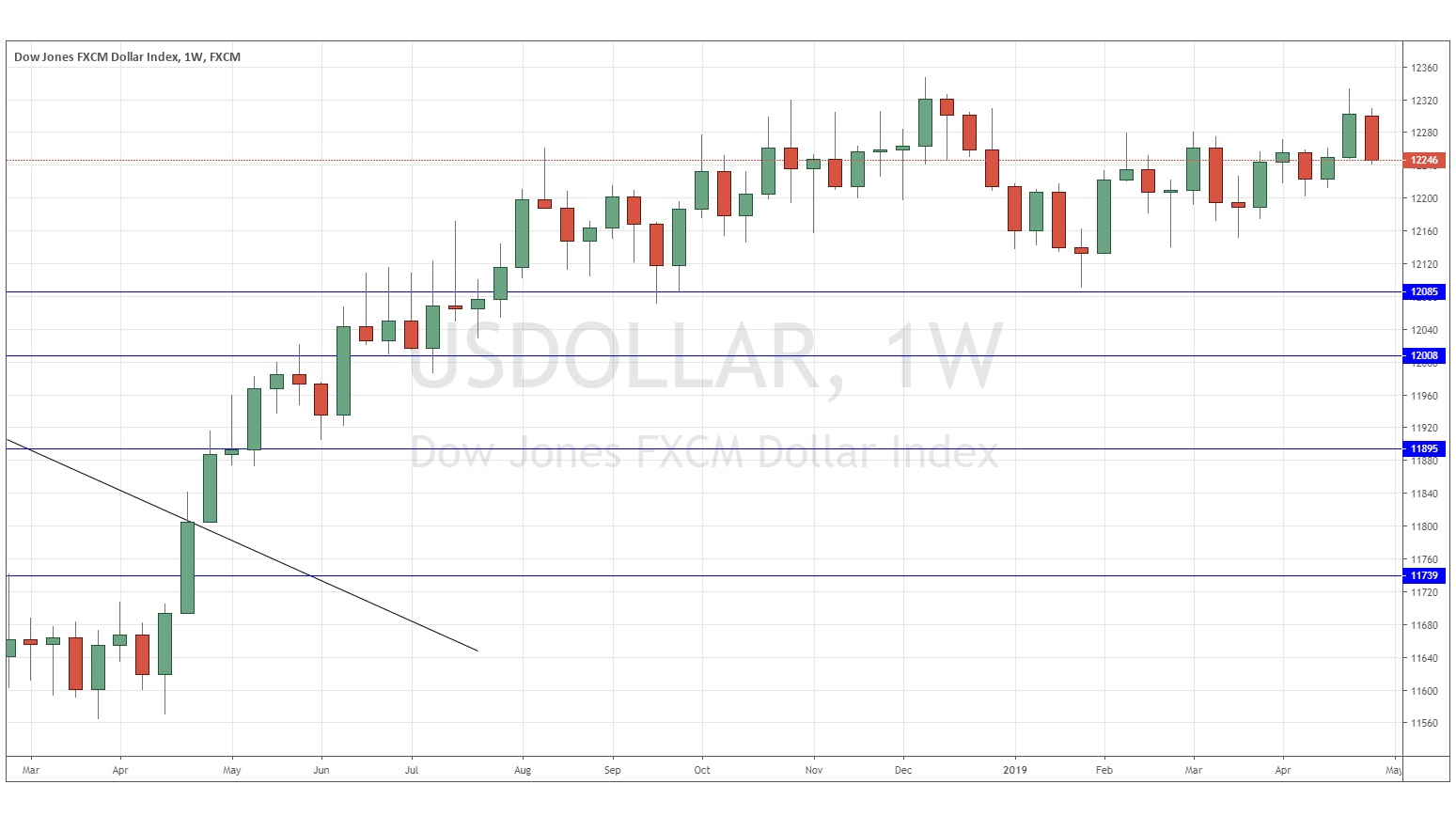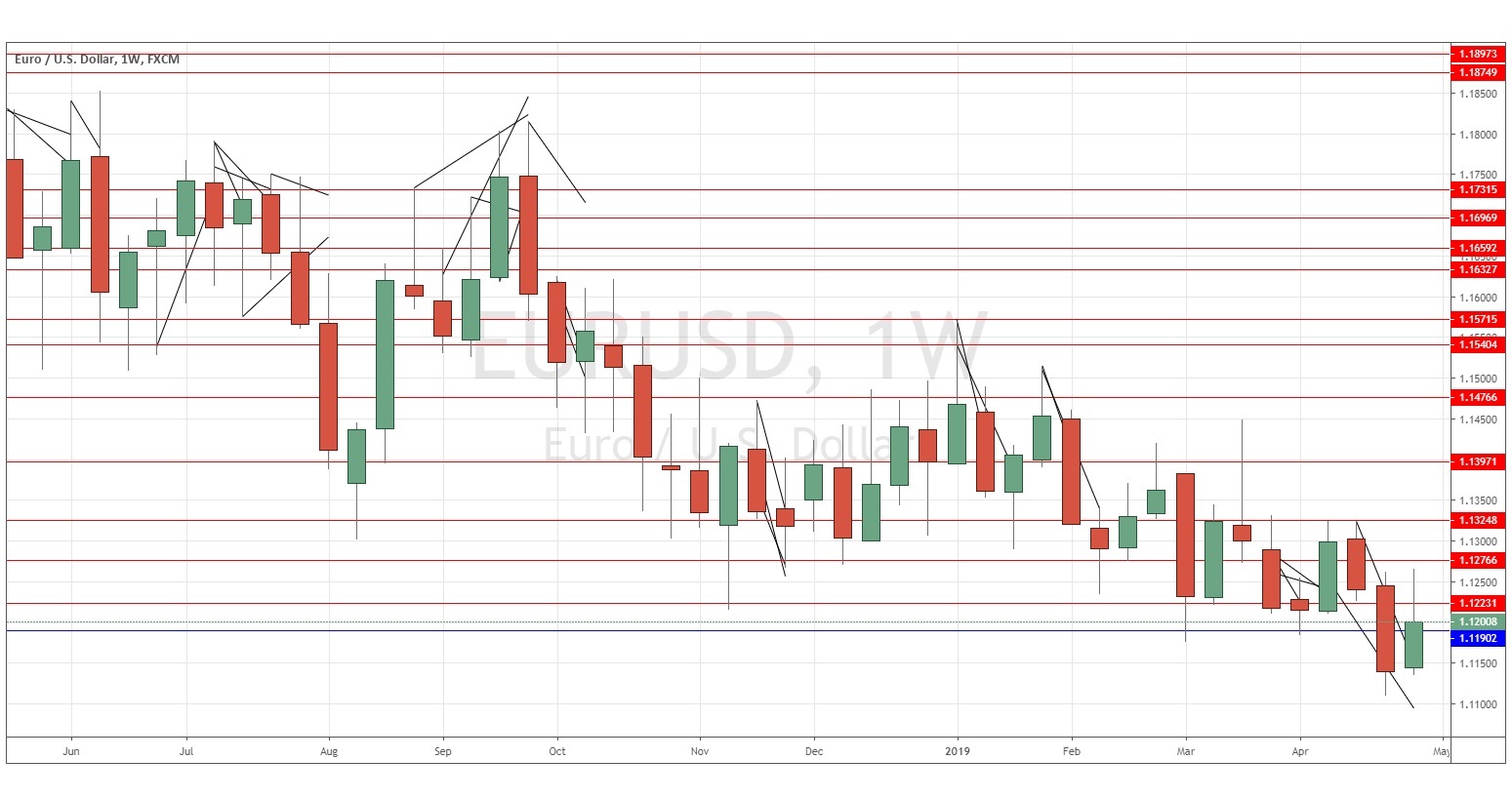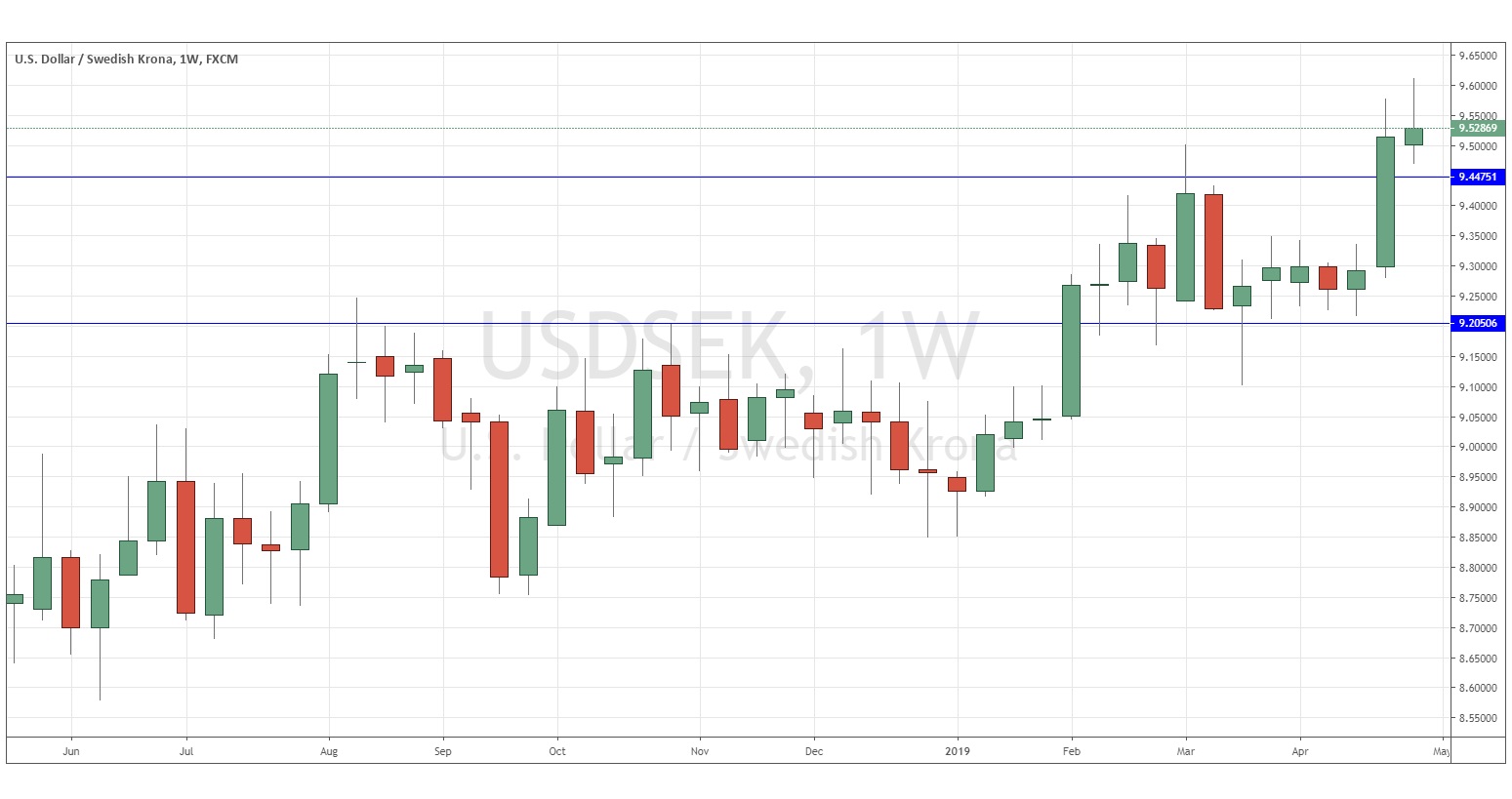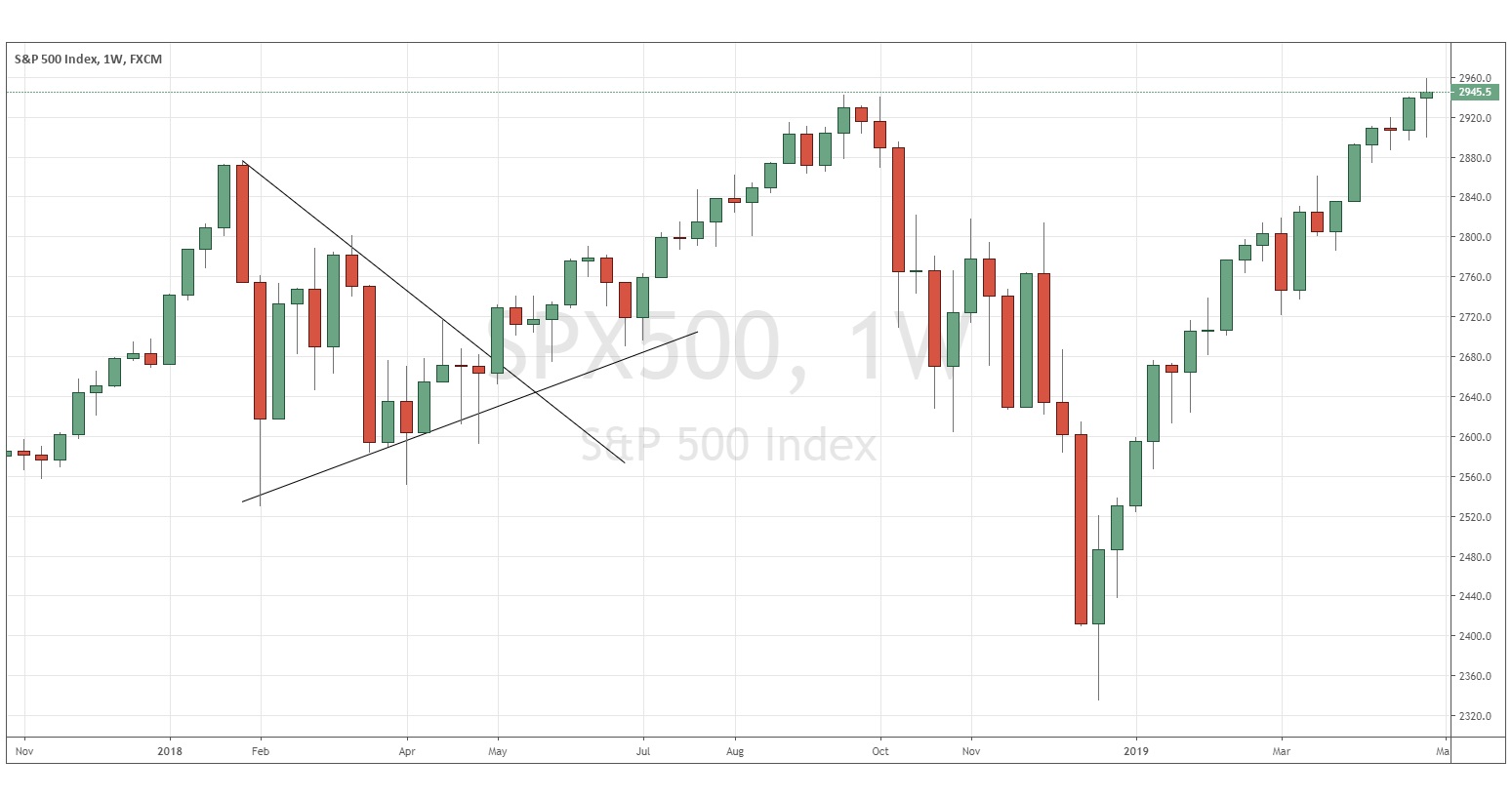The difference between success and failure in Forex trading is very likely to depend upon which currency pairs you choose to trade each week, and not on the exact trading methods you might use to determine trade entries and exits. Each week I am going to analyze fundamentals, sentiment and technical positions in order to determine which currency pairs are most likely to produce the easiest and most profitable trading opportunities over the next week. In some cases it will be trading the trend. In other cases it will be trading support and resistance levels during more ranging markets.
Big Picture 5th May 2019
In my previous piece last week, I forecasted that the best trades would be short EUR/USD and long USD/SEK and the S&P 500 Index. While the EUR/USD currency pair rose by 0.55%, the USD/SEK currency pair rose by 0.16%. The S&P 500 Index rose over the week by 0.20%, so the week’s trades produced a very small averaged loss of 0.06%.
Last week’s Forex market saw the strongest rise in the relative value of the British Pound, and the strongest fall in the relative value of the Australian Dollar.
Last week’s market was again mixed, yet the overall “risk-on” mode seems to still be surviving as stocks have continued to rise, although other risky assets have sold off.
The Forex market has been livelier, with the Australian Dollar in focus while the U.S. Dollar resumed its unlikely advance.
This week will probably be dominated by central bank input concerning Australia and New Zealand, as well as important British economic data as well as a possible beginning of conclusive cross-party co-operation over finalizing a Brexit deal.
Fundamental Analysis & Market Sentiment
Fundamental analysis has turned more bearish on the U.S. Dollar following the Federal Reserve’s more dovish approach to monetary policy and growth and weaker than expected inflation data. However, the economy is still growing relatively strongly and last week’s non-farm payrolls data was surprisingly impressive which has boosted the U.S. stock market. The Australian Dollar is still suffering from weak inflation, as this will probably force the Reserve Bank of Australia into a more dovish monetary policy, and this factor still seems to be weighing down on the Aussie. The British Pound may be notably stronger due to the seeming increasing likelihood of cross-party agreement on a Brexit deal.
Market sentiment is mixed but still at least weakly risk-on.
Technical Analysis
U.S. Dollar Index
The weekly price chart below shows that last week the USD Index printed a bearing engulfing candlestick within a multi-month area of consolidation. However, the price is still slightly up over 3 months and 6 months, indicating a bullish trend. Overall, next week’s direction looks uncertain.
EUR/USD
The weekly chart below shows last week produced a relatively large bullish candlestick which closed leaving a long upper wick. The price is in a clear but very slow long-term downwards trend, below its levels from both three months ago and six months ago. The price has not moved much in recent months but there has certainly been a steady drift down, with the price looking heavier and heavier. The price looks weakly likely to fall over the coming week.
USD/SEK
The weekly chart below shows last week produced a relatively large near-pin candlestick at an all-time high price. This is the highest weekly close this pair has ever made, which is a bullish sign, but the shorter-term price action is bearish which indicates entry is not safe right away. The price is in a clear long-term upwards trend, above its levels from both three months ago and six months ago and rising steadily. If the all-time high gets broken again and the price holds up strongly, it should then be a long trade worth being interested in.
S&P 500 Index
The weekly chart below shows last week produced a bullish candlestick which closed within its top quartile. This is the highest weekly close this stock market index has ever made, which is a bullish sign. The price is in a long-term upwards trend, above its levels from both three months ago and six months ago – but we have seen some very large and volatile dips since January 2018. The price looks likely to rise further over the coming week, so I’d be looing to be long above last week’s high price.
Conclusion
This week I forecast the best trades will be short EUR/USD, and long USD/SEK and the S&P 500 Index above last week’s high prices if they are broken.




